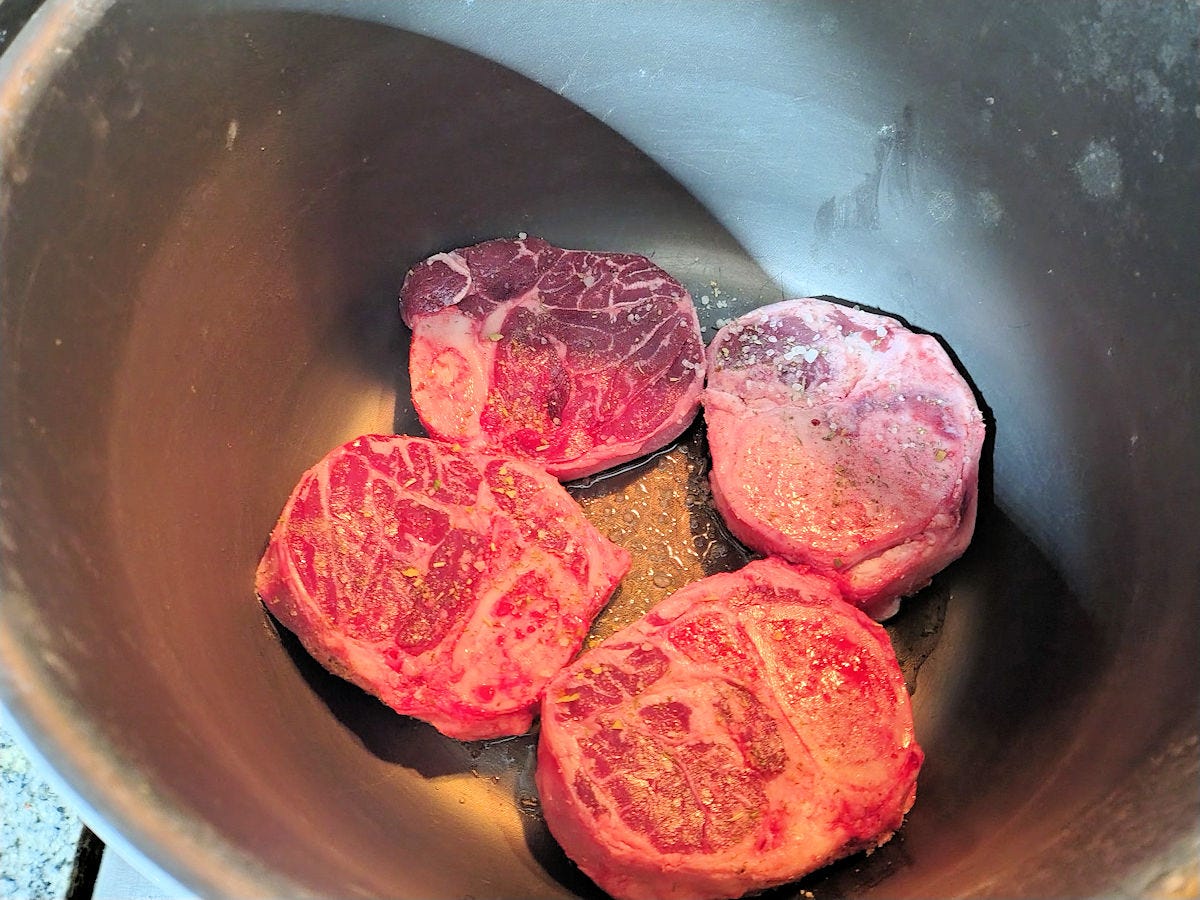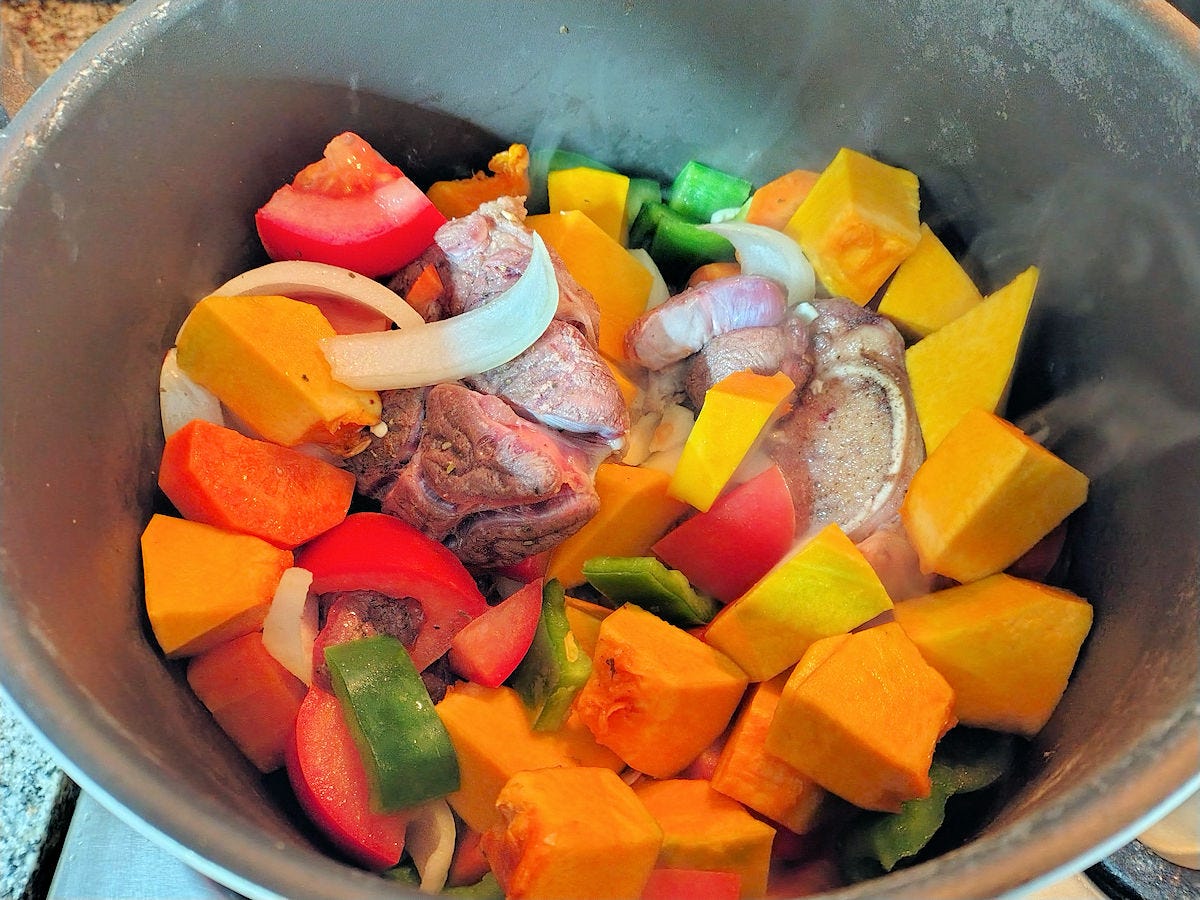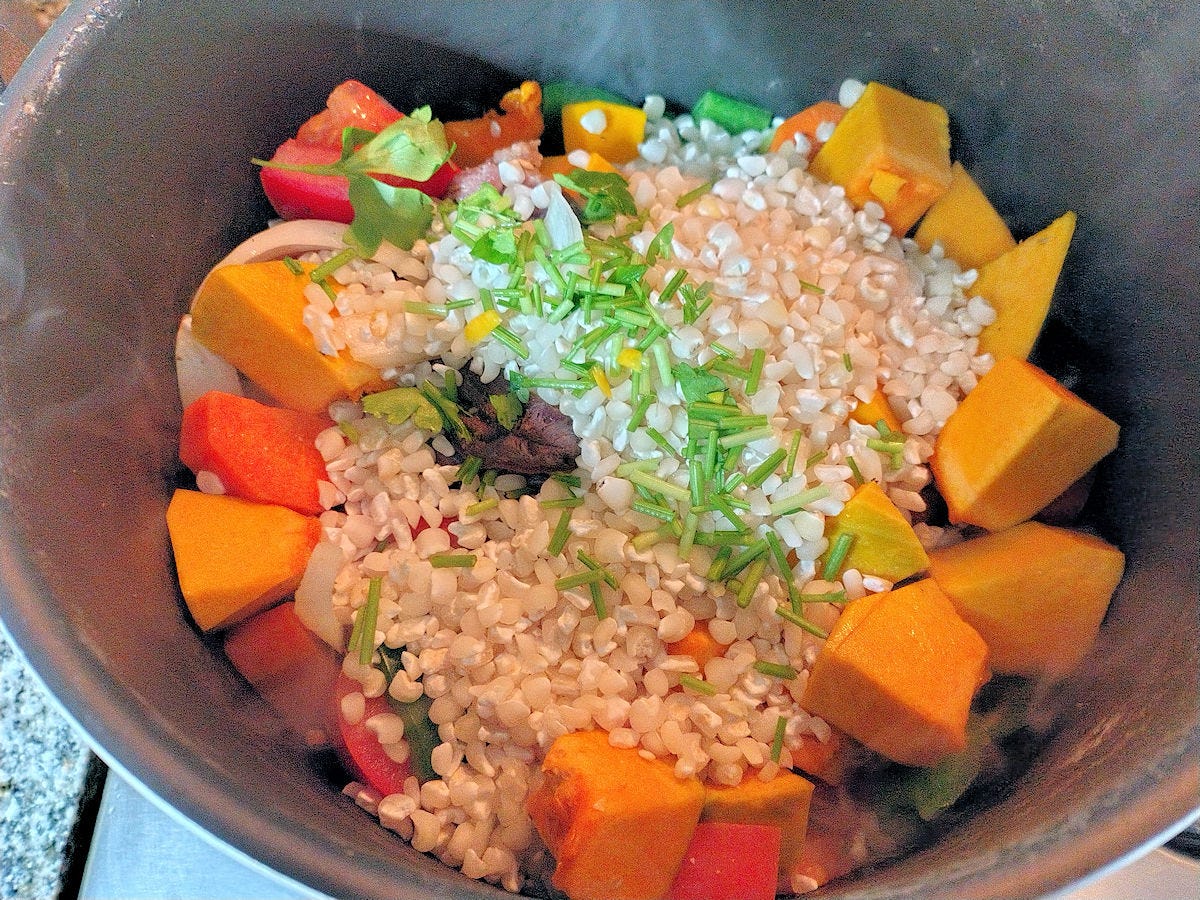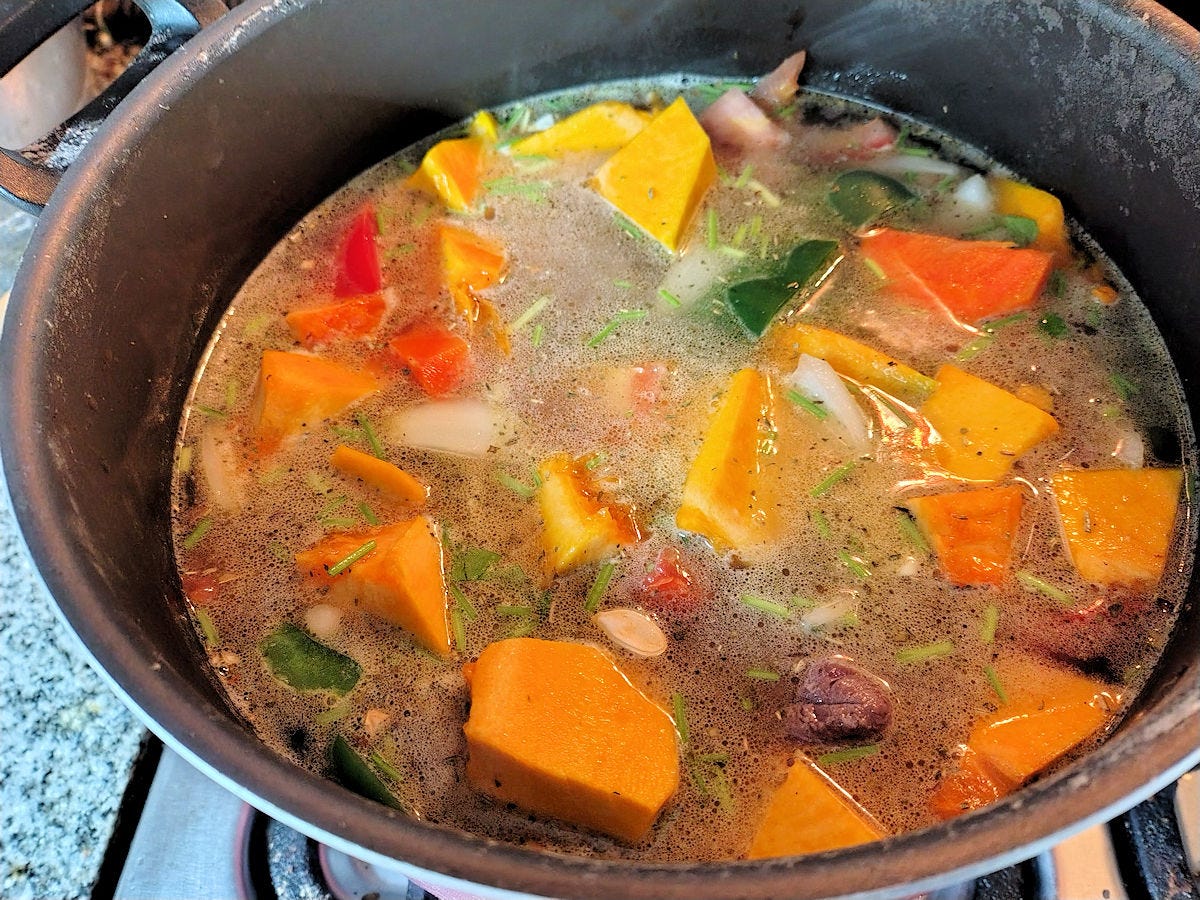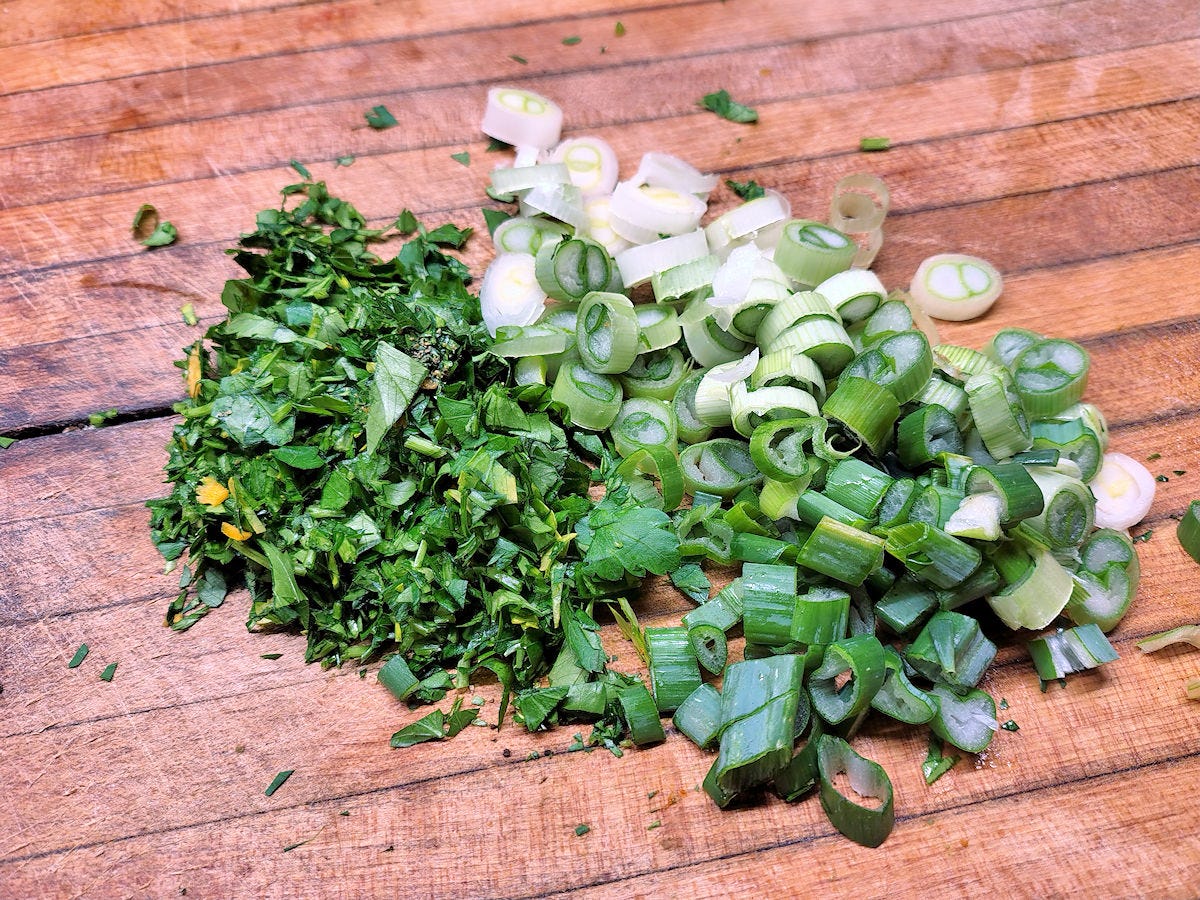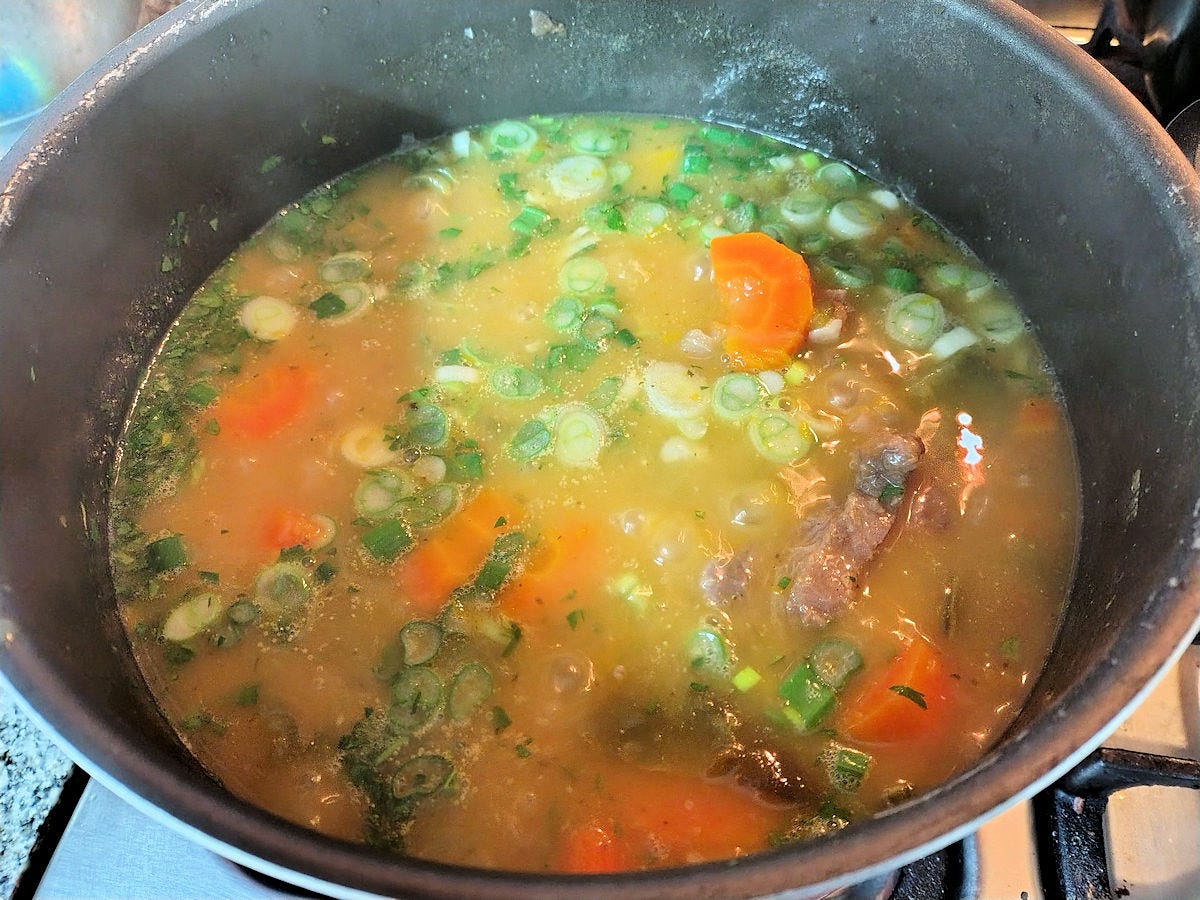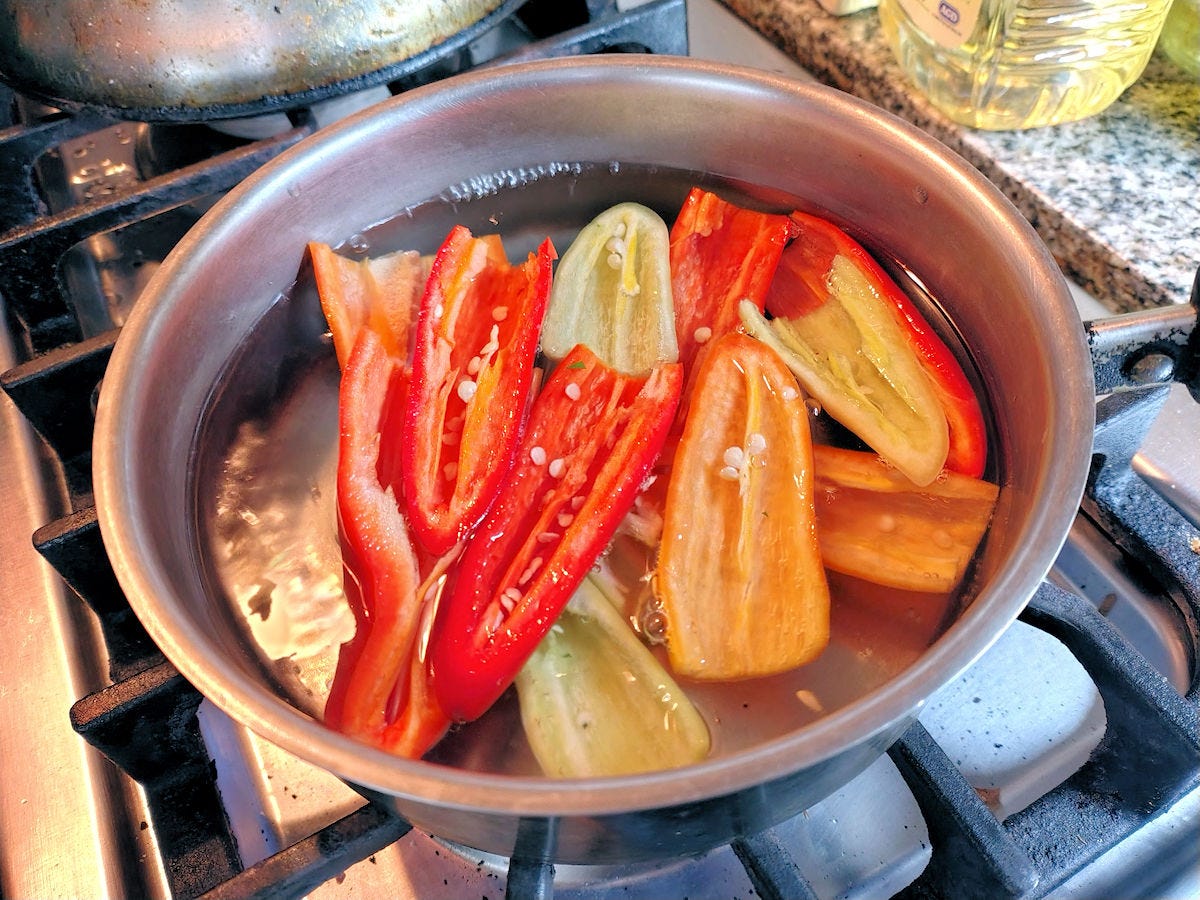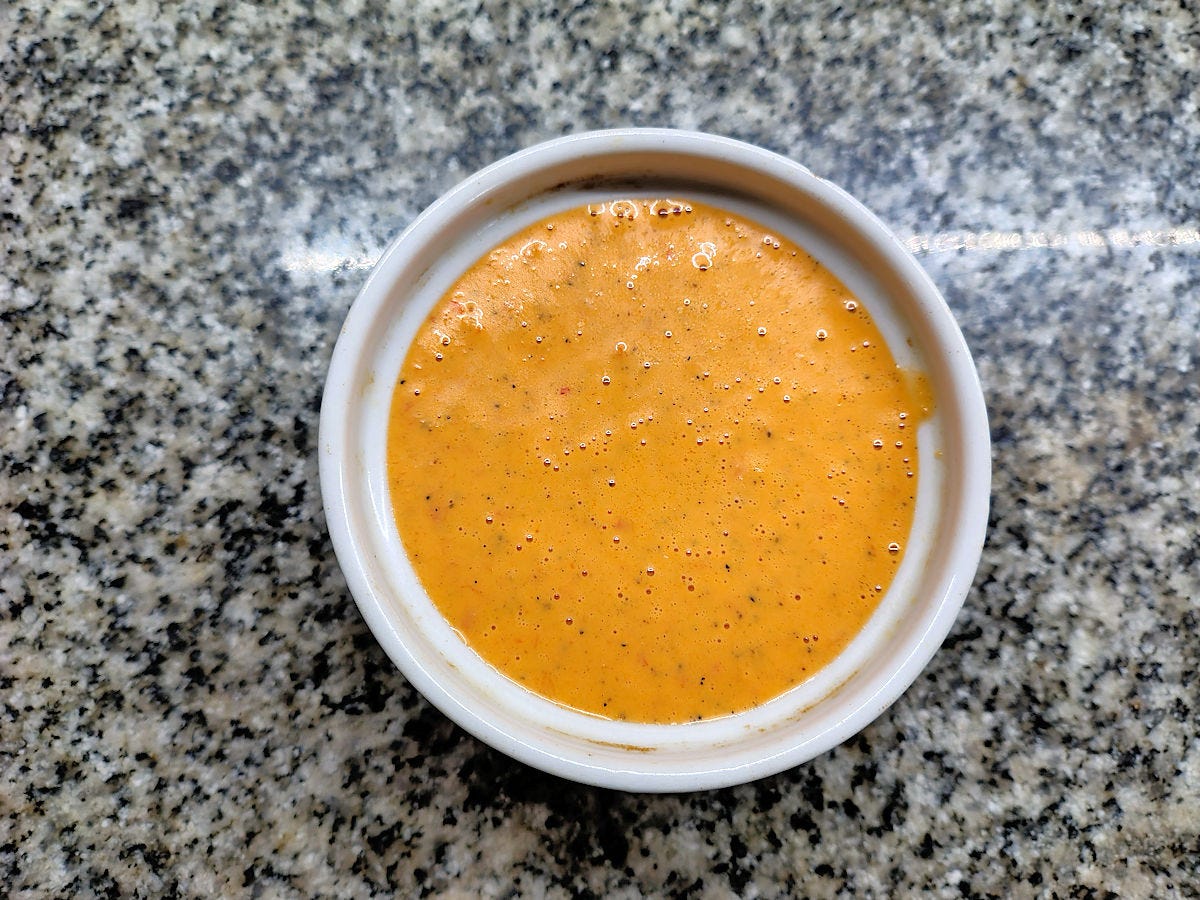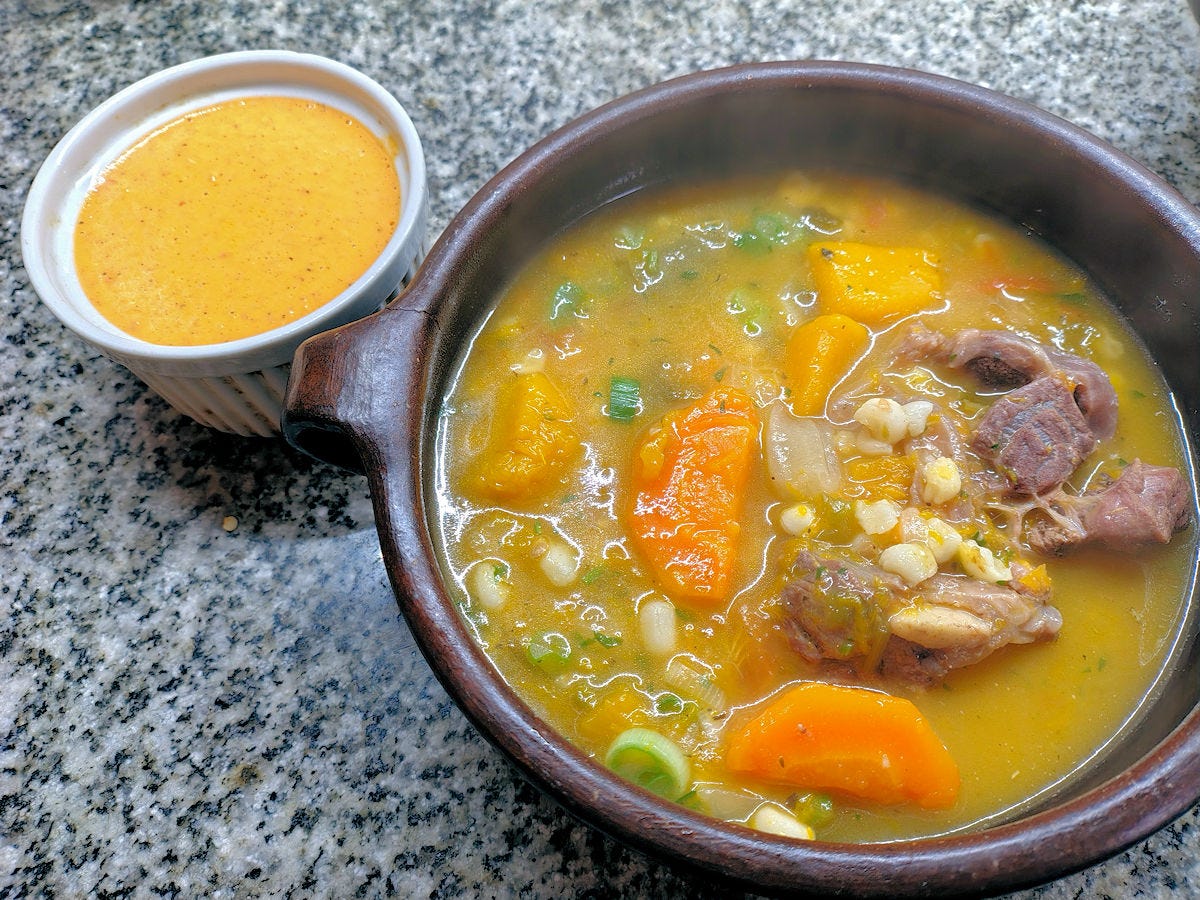The L Word - Wet. As Opposed To?
In which I play around with another locro recipe, this time from Paraguay.
Once again, a referral back to the index page with an explanation of what locro, one of South America’s most ubiquitous stews, is… or maybe that should be locros… are.
We’re off to Paraguay this time, and one of the simpler recipes for locro to date. In the indigenous language Guarani, which, along with Spanish, German and Jopara, a creole of Guarani and Spanish, make up the four official languages of the country, locrillo rykue seems to be one of the main two versions of the dish. Translated, it basically means “wet stew”. As I titled this, as opposed to… what? I guess one could cook a stew down so it becomes more of a thick sauce almost to ladle over rice or something of that nature, whereas this is more soup-like. I just don’t see another locro in Paraguayan tradition that fits that model.
We have four osso bucos, which in retrospect were rather small for the quantity of vegetable - probably should have gotten two more, or four that were bigger. Half a squash, a carrot, onion, tomato, green bell pepper (locote in Guarani), green onions, parsley, garlic, dried cracked white corn, and sal de fines hierbas. The last is a common condiment that’s basically a finely blitzed mixture of salt and dried herbs - my version uses thyme, oregano, rosemary, parsley, basil, sage, bay, and a pinch of cumin.
Lightly season the meat with the salt mixture and then brown it in a little oil.
Add all the vegetables except the green onion and parsley. A bit more of the salt mixture and continue to cook until the vegetables just start to color.
Add the cracked white corn and chop up just the parsley stems and add them in - why waste them?
Top with water, vegetable broth, or, if you can find it, squash broth (Knorr makes a packaged dry squash soup mix that gives a nice flavor).
Bring to a simmer and cook for about an hour and a half, until the meat is nice and tender and the vegetables are well cooked but not falling apart. Add the chopped parsley and green onion during the last five minutes of cooking.
Season to taste with the salt mixture and you’re ready to go. Except…
We need to make our ajicito, hot sauce, to be added as one likes. A mix of three different chilies - really, whatever you want - these were a mix of mild and hot ones - two each of three different types. Seeded and then boiled for two minutes.
Blended with the juice of a lime, enough neutral oil to blend it smoothly, and seasoned with a little salt and pepper.
And, serve.
The simplicity shows through. This isn’t an overly complex bowl of soup, albeit it’s tasty. I’d make it again if I didn’t want to do a lot of prep work, but, if I’m going to whip up a big pot of a warming soup or stew, most times I’d rather put in a bit more work for something with a bit more going on. The hot sauce is delicious, we’ve been using it on other dishes in the following days.



